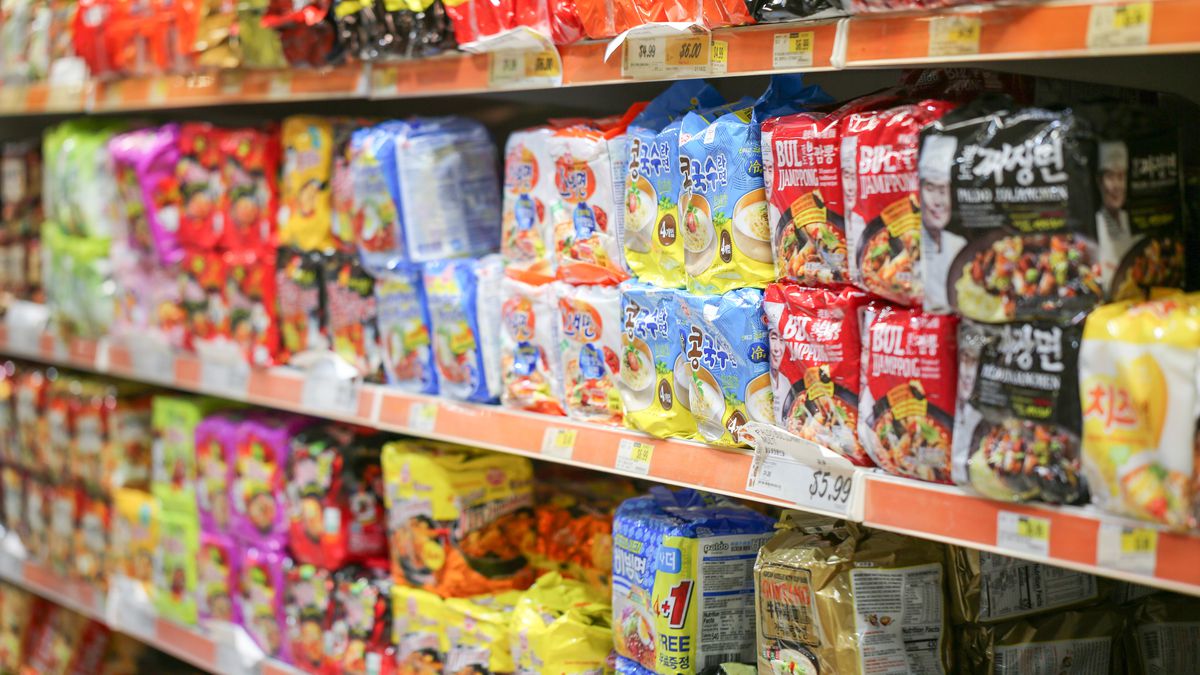
Asian grocery stores in the United States have become essential hubs for those seeking authentic ingredients, products, and cultural experiences from across Asia. With the increasing Asian diaspora and growing interest in Asian cuisines, these stores have proliferated in cities nationwide, offering everything from staple foods and spices to cookware and health products. For food enthusiasts, chefs, and families, Asian grocery stores are more than just places to shop—they are cultural landmarks that connect people to the diverse culinary traditions of Asia.
The Rise of Asian Grocery Stores in the USA
In recent decades, the presence of Asian grocery stores in the U.S. has expanded significantly, driven by the growing number of Asian immigrants and the increasing popularity of Asian cuisines. According to the U.S. Census Bureau, the Asian-American population is one of the fastest-growing demographic groups in the country. As a result, grocery chains catering specifically to these communities have blossomed, especially in urban areas with large Asian populations such as New York, Los Angeles, San Francisco, Chicago, and Houston.
These stores range from small, family-owned businesses to large national chains such as H-Mart, 99 Ranch Market, and Mitsuwa Marketplace. Some stores are specialized, focusing on products from a specific region—such as China, Japan, Korea, India, or Southeast Asia—while others offer a wide variety of goods catering to multiple Asian culinary traditions.
What You Can Find in an Asian Grocery Store
Asian grocery stores are treasure troves of ingredients that may be difficult to find in mainstream supermarkets. They offer a wide selection of products, including:
- Fresh Produce: Asian grocery stores often carry a variety of fruits and vegetables unique to Asian cuisines. You can find bok choy, daikon radish, bitter melon, long beans, and different varieties of mushrooms like shiitake and enoki, among others.
- Rice and Grains: Rice is a staple in many Asian cultures, and Asian grocery stores offer numerous varieties, including jasmine rice, basmati rice, sushi rice, sticky rice, and specialty grains such as black rice and glutinous rice.
- Noodles and Dumplings: Noodles are central to many Asian cuisines, with varieties like ramen, soba, pho noodles, and rice noodles. Dumplings, whether frozen or fresh, can be found in abundance, offering fillings from pork and shrimp to vegetables and tofu.
- Spices and Sauces: The backbone of Asian cooking is its bold flavors, and this is where Asian grocery stores shine. From soy sauce, fish sauce, hoisin sauce, and miso paste to curry powders, five-spice powder, and ginger, these stores provide the essentials for recreating authentic dishes.
- Snacks and Beverages: Asian grocery stores often feature unique snacks and drinks. Popular items include mochi, Pocky sticks, seaweed snacks, and a variety of teas, including green tea, oolong, and jasmine tea. You can also find traditional beverages like bubble tea (boba), coconut water, and Asian sodas.
- Health and Beauty Products: Many Asian grocery stores offer beauty and personal care items that reflect traditional Asian health practices. Products such as rice water shampoos, facial masks, herbal teas, and medicinal herbs can often be found in the aisles.
- Frozen Foods and Specialty Items: These stores often carry frozen versions of items such as dumplings, bao buns, and frozen fish cakes. Specialty items like mooncakes, kimchi, and pickled vegetables are also popular.
The Cultural Experience
An Asian grocery store is often more than just a marketplace; it’s a cultural experience. Many stores feature vibrant displays of colorful packaging and aisles filled with unfamiliar products, making them exciting for both newcomers to Asian cuisine and those with deep roots in it. The diversity of products reflects the rich cultures, languages, and culinary traditions of the countries they represent.
For those unfamiliar with Asian ingredients, the stores often offer helpful signage in multiple languages and sometimes even in-store demonstrations or cooking classes. Shoppers can discover new dishes, learn about different cooking techniques, and experiment with new flavors.
Why Shop at Asian Grocery Stores?
- Authenticity: Asian grocery stores are the go-to destination for authentic ingredients that make Asian dishes taste just like they do in their country of origin. Mainstream supermarkets typically do not carry the specialized products needed for traditional Asian recipes.
- Cultural Connection: For Asian immigrants and their families, these stores provide a sense of home, offering familiar products that remind them of their native countries. They also serve as a hub for cultural exchange, where people from different backgrounds can explore and learn about diverse Asian cultures.
- Quality and Variety: Many Asian grocery stores offer higher-quality produce, meats, and specialty items that aren’t commonly found in conventional supermarkets. They often feature products from local and international suppliers, ensuring fresh, high-quality options.
- Affordability: Asian grocery stores often offer competitive pricing on many items, particularly staples like rice, noodles, and spices. Bulk purchasing options and smaller, local brands can also make shopping at these stores more economical.
Conclusion
Asian grocery stores in the USA play a vital role in connecting people to the rich, diverse culinary traditions of Asia. They offer access to authentic ingredients, promote cultural exchange, and provide a unique shopping experience for both those familiar with Asian cuisine and those just beginning to explore it. As the popularity of Asian food continues to grow in the U.S., these grocery stores will likely remain key pillars of the American food landscape, helping people from all walks of life create delicious, flavorful meals that reflect the diversity of the Asian continent.
For more information click here Asian grocery USA.





Leave a Reply